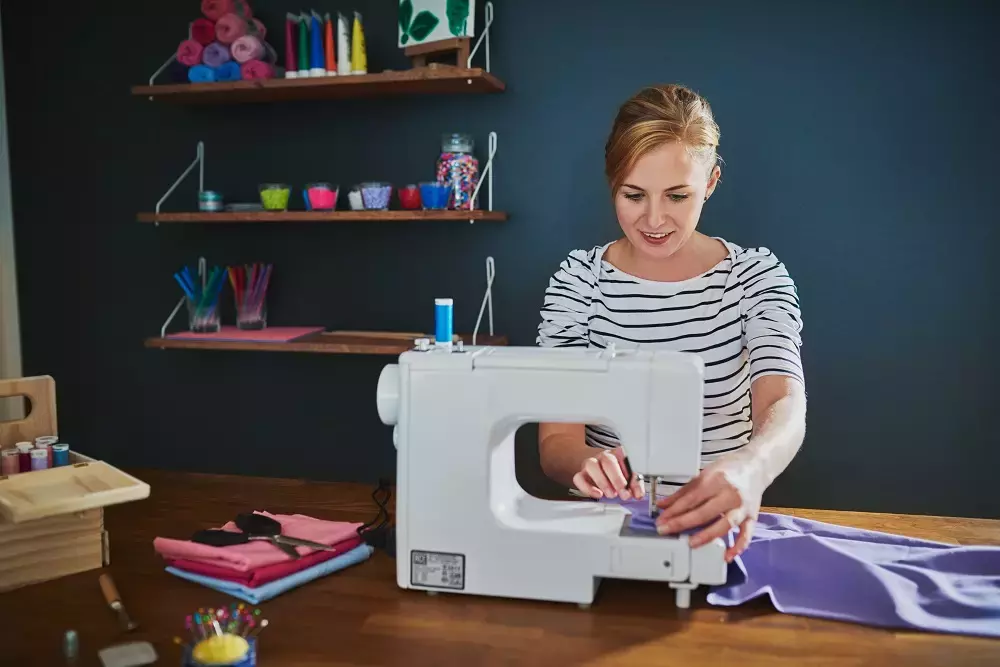10 Habits All Sewers Need to Learn
2019-07-05
New and seasoned sewers know that essential habits can have a massive impact on your project. Unfortunately, habits take time to build, and you may spend weeks, months, or years taking short-cuts only to have lackluster results. There are many good habits which are not so time-consuming and can be quite effortless.
Remember that changing habits is more complicated than starting a new habit, so make the changes slowly and when you see the opportunity.
1. Increase Stitch Length
Regardless of the project, a short stitch length always seems more appropriate. However, garment sewing with a short stitch length can spell disaster for your entire project. Additionally, it takes longer to use short stitches, and they're more challenging to remove. Instead, use a longer stitch length as your default setting. Start by migrating to a 3.0mm length and then work into a 3.5 length when you become more comfortable with the habit.
2. Put More Thought into Your Fabric Choices
Every crafter is guilty of choosing fabric because of its pattern, or texture. Then when you're home, the project is an utter failure. If you're working with a printed pattern, then there are material suggestions. Those suggestions are vital for a successful project. When working with garments, take special care if the material suggestions are something you’re not familiar with using.
3. Select and Sharpen Your Scissors
Too often sewers get in the bad habit of picking up whichever scissors are nearest. Different scissors have different purposes, and it's vital that you sharpen all of them! Proper cutting tools, including scissors, rotary blades, and shears, will require changing or sharpening.
Which scissors do you need on hand? Always keep a pair of 4-inch embroidery scissors, 5-inch tailor point set, and 8-inch micro-serrated shears.
4. Pin (or Clip) Properly
There is a 'right' way to pin every project. Always pin parallel to the edge of the fabric and keep your pins inside the seam allowance — place pins at every corner, and every 4-inches.
5. Mark Your Fabric and Leave It Be
It's relatively common practice for experienced sewers to remove pattern pieces and not transfer the markings. The intention is to make the markings later. But you already have the pattern with you and the fabric ready. The fabric may lose its shape through the different stages of the project. So it's important to make your markings and leave them there until the garment is complete.
6. Invest in Quality Equipment
Sewing machines are a big piece of equipment, and many people are happy with inexpensive machines. If you're looking to become a more full-time sewer, you need a quality machine. Additionally, you want to look at all of your other equipment as well. If you primarily make quilts but have been putting off purchasing a quality rotary mat or cutter, then you're hindering every project you start. Always consider buying the equipment that is best for the long-term.
7. Spend Time Warming Up
Musicians warm up before playing, and you should get your hands primed too! Before you start on your project, go through a few lines on a scrap of fabric. You can even use this time to make stretches of bias tape if you're set on every minute behind your machine being productive.
8. Practice Hand Stitching
There are many times in nearly any project when hand stitching may not only be easier, but better for the final result. Hand sewing can help in construction and can make difficult steps easy. Consider hand sewing your zippers or complicated, or extremely small, seams.
You may even consider using hand basted seams in place of pins for a more accurate machine-stitch.
9. Correct as You Go
Correcting or especially fitting as you work your way through a project is difficult for many crafters. Sewers will often start the hobby or career with the understanding that they need to finish a piece and then evaluate it to learn for the next project. As you learn, though, you'll likely see ways to correct the garment or craft before it's complete. Take time to fix things and change the fitting as you work.
10. Balance Tension Through Your Feed Dogs
Balancing tension is something that many new crafters are hesitant to take on, but it can have a massive impact on your project. The feed dogs and needle can help you achieve a pucker-free stitch but dragging fabric through the feed dogs can lead to broken needles and worse. Adjust your machine’s tension and ensure that you’re using the correct needle size.
Complement your good sewing habits with high-quality sewing machine essentials and sewing machines from GoldStar Tool.





